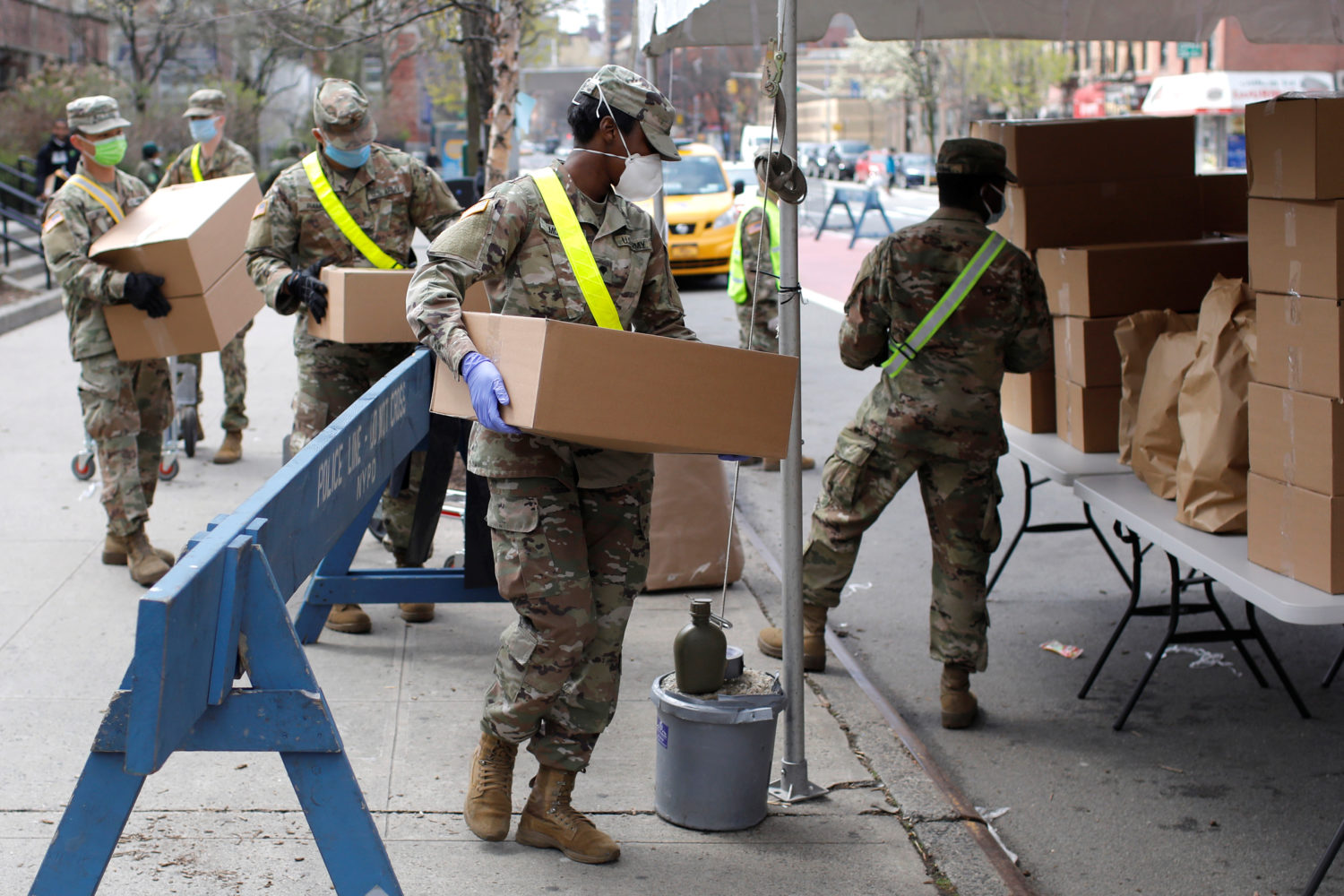
By Barbara Goldberg
NEW YORK (Reuters) – Easter is a special holiday for 6-year-old Nora Heddendorf. It’s a day when she loves to get dolled up in a fancy dress and shiny shoes, and have fun with family and friends hunting for brightly colored eggs.
This year the coronavirus pandemic has forced her to adapt. She will accessorize her Easter outfit with a white paper mask, blue disposable gloves, and a container of disinfectant wipes. And after hearing that her New Jersey town’s annual egg hunt may be canceled, she came up with the idea of a “rock hunt.”
Nora’s hunt not only substitutes brightly painted stones for eggs, which are in short supply at some stores, but it also allows her neighbors to do their hunting during their social-distancing walks.
“I was sad it was going to be canceled because of the virus,” the kindergartener told Reuters in a phone interview. “I want to make people happy.”
From the White House to small town parks, the pandemic has forced the cancellation of traditional Easter egg hunts and “rolls” across the United States, closed churches, and scotched plans for Easter meals with extended families.
But many Americans are still finding ways to have holiday fun, from an Oregon candymaker making chocolate bunnies wearing face masks to a Texas church organizing a virtual egg hunt using the video game Minecraft.
Weeks ago, Nora and her mother started organizing her hunt in their town of Medford Lakes. She assembled dozens of DIY kits, each containing five rocks, four paint colors, and instructions, all wrapped in a plastic bag. Of course, she wore disposable gloves and sprayed the contents with disinfectant.
She then left the kits outside her home for pick-up by people who want to participate. On her Facebook page, Nora’s Rocks, the young artist urged her community to return decorated rocks to her to hide.
“Thank you for helping Nora’s Rocks bring our town together while staying apart,” said the instruction letter she included in the kits.
Her mother, Samantha Heddendorf, president of an environmental cleanup company that has been decontaminating buildings affected by the coronavirus crisis, said the hunt will start on Good Friday and continue through Easter Sunday, with fresh batches of painted rocks hidden each day.
The goal is to place 500 stone “eggs” in every nook and cranny of the 1 square mile (2.6 square km) town.
“When people are doing their social distancing walks, they can look for rocks – or so-called Easter Eggs. They can have something to hunt for and pick them up and at least have a smile to celebrate Easter with,” Samantha Heddendorf said.
In Central Point, Oregon, chocolatier Jeff Shepherd had a brainstorm to save his Lillie Belle Farms from shutdown in the wake of the coronavirus. He told his Facebook followers that he would make “Covid Bunnies” – milk and dark chocolate ones with white face masks and white chocolate ones with blue face masks.

Six-year-old Nora Heddendorf displays her do-it-yourself kits for a painted rock hunt she and her mother are organizing in their town of Medford Lakes, New Jersey, U.S., March 28, 2020 amid the coronavirus disease (COVID-19) outbreak. Samantha Heddendorf/Handout via REUTERS
It was an instant hit. Shepherd was able to hire back the seven full-time staff he had laid off, has sold 5,000 bunnies, and is scrambling with back orders, now limiting purchases to six per customer.
Safe distancing to thwart virus spread is what convinced the Tate Springs Baptist Church in Arlington, Texas, to go digital with its Easter Egg hunt, using Minecraft but disabling potentially scary game elements like monsters.
“Our ultimate goal is to spread the gospel, but we want the kids to still enjoy Easter,” said Reverend Curtis James.
Back in New Jersey, Nora was excited that her idea was warmly embraced by so many, with the town mayor stopping by to witness her stuffing the kits and the local Lions Club inviting her for lunch “when this whole thing is over.”
Her favorite “thank you” was gift-wrapped rolls of toilet paper, one of the staples – including eggs – being hoarded by people panic buying during the pandemic.
“My mom smiled when the toilet paper came,” Nora said.
(Reporting by Barbara Goldberg in New York; Additional reporting by Rich McKay in Atlanta; Editing by Rosalba O’Brien)











